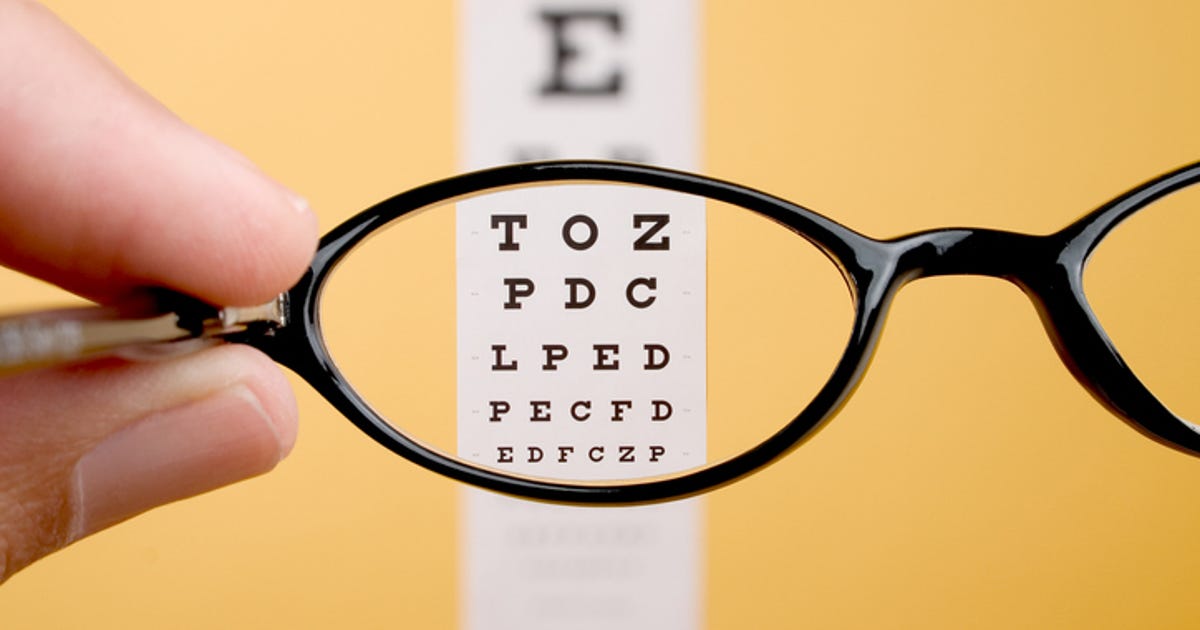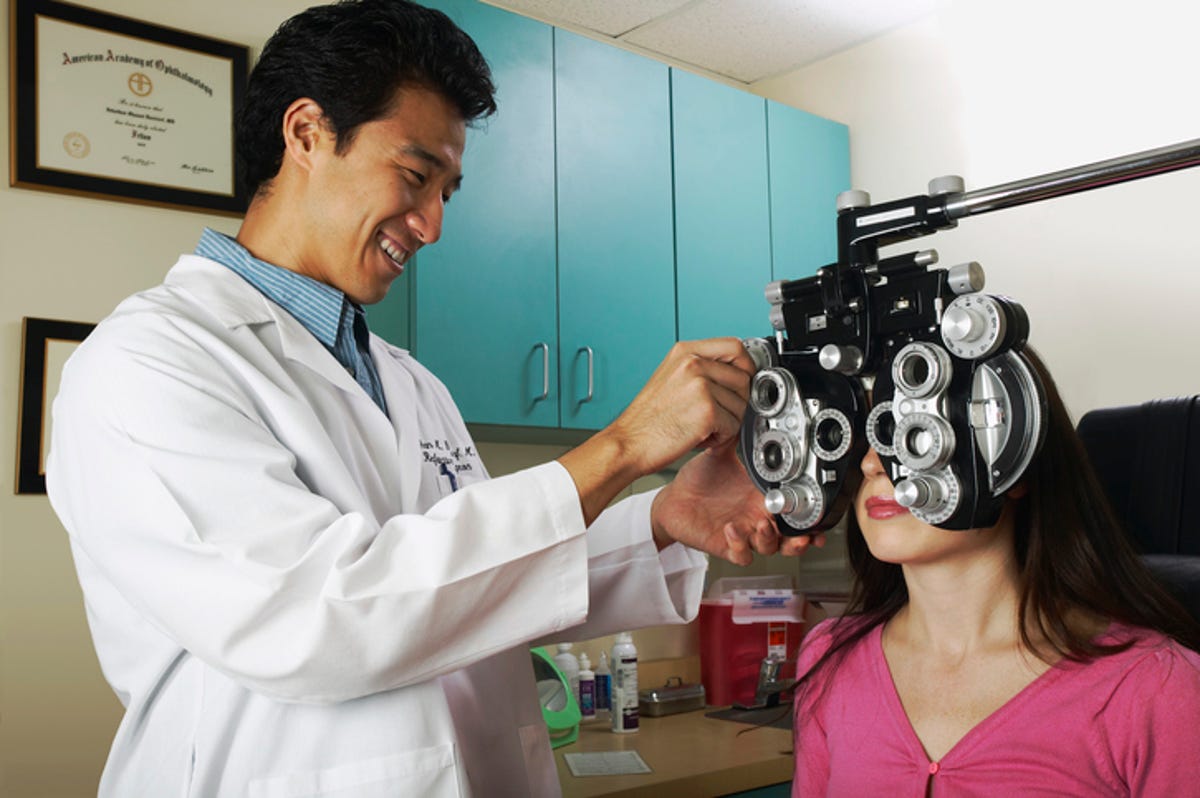
I have a confession. I got my first real eye exam last month. I’ve always had good vision, so I got by without getting a check-up because I didn’t think I needed one. But here’s the thing. Our brains are really good at adapting to gradual vision changes, which makes you think you don’t need glasses. Spoiler alert: I have glasses now.
Eye exams aren’t only to determine the quality of your vision. They’re also about checking up on your eye health. Optometrists and ophthalmologists address overall eye health and screen for eye diseases like glaucoma, cataracts and rare cancers like ocular melanoma.
What does an eye exam do?
There are two main functions of an eye exam — assessing your vision and checking for diseases. Let’s talk about why each is needed.
Address and correct vision issues
A comprehensive eye exam typically includes a visual acuity test and a refraction eye exam. The visual acuity test examines your vision for each eye. It’s the one everyone knows — your doctor will ask you to cover one eye and read the letters on the screen. A refraction eye exam involves looking through a machine with several lens options you compare. This is how your doctor determines your prescription.
Regular eye exams help track your vision over time. As we age, our eyes change, which affects vision. Presbyopia is the natural loss of flexibility of the lens of the eye. This condition makes it harder to focus on close objects — like books and computers. Many people see this decrease in their vision in their mid-forties.
Assess for eye diseases
Even if you don’t need glasses to function, you should still keep up with regular eye examinations. Not only are they a chance to assess your eye health and risk of diseases like macular degeneration or cataracts, but they ensure you get the treatment you need early before your vision is compromised. Your doctor will assess your risk of common eye problems through pupil dilation. Think of your pupil as the window into your eye; by making the pupil bigger, your doctor can see into the structures of the eye.
Eye diseases can have few or no symptoms. Eye exams and dilations are the best way to catch issues and form a treatment plan.
Eye diseases and conditions your doctor may check for:
- Cataracts: Cataracts describe the clouding of the lens. It can occur in a range of severity, with some small enough that it doesn’t impact your vision. However, cataracts can become large enough to compromise your vision.
- Glaucoma: Glaucoma happens when there is too much fluid pressure in the eye. It can damage the optic nerve and seriously damage vision.
- Age-related macular degeneration: Associated with aging, AMD affects the central vision of the eyes. AMD makes a person unable to see things clearly, affecting their ability to do daily tasks like driving.
- Diabetic retinopathy: An eye condition that can develop in anyone who has type 1 or type 2 diabetes and affects the retina. It can lead to severe vision loss and blindness.
- Ocular melanoma: According to the American Academy of Ophthalmology, ocular melanoma is a rare form of cancer that develops in the eye cells that produce pigment. It generally occurs in the uvea or the middle layer of the eye. Because it is not on the surface and often not visible to the naked eye, examinations that dilate the eye are often the only way to detect it.
Medical conditions like diabetes or high blood pressure can affect how well you see and increase your risk for eye diseases. So it’s important to schedule a regular eye exam to ensure you’re doing the right things for your vision. Some medications also affect the eyes.

Mango Productions/Getty Images
How often should you get an eye exam?
By now, you probably know why eye exams are important. But how often should you be scheduling one? Several factors determine how often you should get an eye exam — age, health and family history.
The general guidelines for eye exams, according to the American Optometric Association, are as follows:
- Under 5 years: Babies have their first eye exam between six months and a year of age. The next exam for this age group should occur between the ages of three and five.
- 6 to 18 years: Yearly eye exams are recommended for this age group as their vision can change as they grow.
- 19 to 64 years: At least every two years, this age group should schedule an eye exam to document changes in their vision.
- 65+ years: Annual eye exams are recommended for seniors.
If you fall into any of these categories but have prescription glasses, your doctor will recommend getting an annual exam, especially if you have a prescription that needs to be renewed for contacts.
The same is true if you’re at risk for eye diseases, are taking medications that affect your vision or have had an eye injury.
Factors that require more frequent eye exams:
- Having a prescription for glasses or contacts.
- A family history of vision problems or eye diseases.
- Living with a chronic disease that increases your chance of eye disease.
- Taking medications that can impact your eyes and vision.
- Having a previous eye injury or eye surgery.
Too long; didn’t read?
Eye exams aren’t just to correct vision with glasses, though that is the main function for many people. Eye exams are often the only way to detect and treat eye diseases and conditions that otherwise don’t present symptoms. It’s important to track your vision changes and catch eye troubles before they start.
Adults should be getting a comprehensive eye exam at least every two years. People with risk factors for eye diseases or who wear glasses should get annual eye exams.
The information contained in this article is for educational and informational purposes only and is not intended as health or medical advice. Always consult a physician or other qualified health provider regarding any questions you may have about a medical condition or health objectives.
